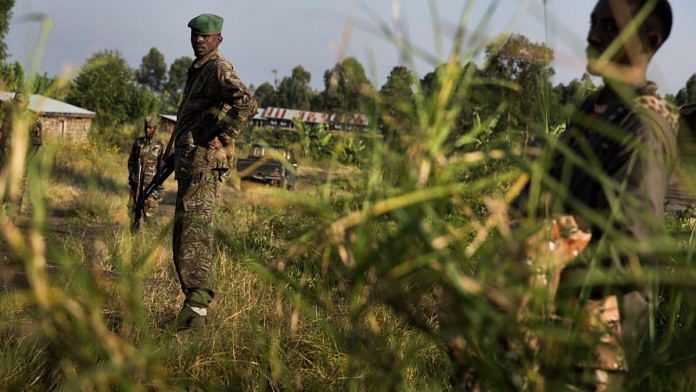New Delhi: The worsening security crisis in the Democratic Republic of the Congo (DRC) — which claimed the lives of two Indian peacekeepers in July — was noted in briefings at the United Nations Security Council (UNSC) last week.
This comes amid a major resurgence of the M23 group, a rebel militia previously defeated in 2013, which has now seized swathes of area in the east of the DRC.
Indian Blue Helmets have been part of the UN’s peacekeeping mission in DRC — officially known as the United Nations Organization Stabilization Mission in the Democratic Republic of the Congo (MONUSCO) — since the early 2000s, tasked with fighting M23 and other armed groups.
As of 2019, around 4,000 Indian soldiers were part of MONUSCO, which has a total of around 20,000 soldiers from around the world.
On Friday, while addressing the UNSC, Rwanda’s Permanent Representative to the UN, Claver Gatete, claimed that the conflict between the M23 and the DRC government is an “internal matter” and that Rwanda (DRC’s neighbour) “should neither be a scapegoat nor equated to M23”.
Gatete further accused the international community of being silent about alleged links between the DRC government and another militia group called the Forces démocratiques de libération du Rwanda (FDLR), some of whose leaders took part in the 1994 genocide in Rwanda.
The issue was also raised by the US ambassador to the UN Linda Thomas-Greenfield, who urged all armed groups in the region to lay down their weapons, adding that Rwanda should cease its “assistance” to M23.
UN Special Representative Bintou Keita also told the UNSC that over the past weeks, the security situation in eastern DRC had “deteriorated dramatically” and that the M23 had extended its control in North Kivu province.
This comes despite attempts by Rwanda and DRC to pursue a “de-escalation process” as well as a ceasefire pact that M23 had agreed to last month. However, fighting between M23 and DRC forces broke out last week, renewing fears of a “proxy” conflict.
Also read: Cobalt, copper, China: India should pay more attention to the savage violence in Congo
Roots in 1994 genocide
The ongoing conflict in DRC and the resurgence of the M23 has resulted in a blame game between Rwanda and the DRC.
In many ways, this has roots in the 1994 genocide in Rwanda, during which about 8 lakh members of Tutsi minority group, as well as some moderate Hutu and Twa, were killed by armed Hutu militias.
The Tutsis, despite being fewer in number, were an elite minority in Rwanda, forming the aristocratic class. The Hutus, an ethnic majority comprising over 80 per cent of the Rwandan population, were traditionally of lower classes. Therefore, the events in 1994 were not just the result of ethnic frictions, but class tensions too.
Prior to the genocide, a group of Tutsi exiles in neighbouring Uganda formed the Rwandan Patriotic Front (RPF). The RPF invaded Rwanda in 1990 and clashes continued until a peace deal was signed in 1993.
However, the very next year, when Rwandan President Juvénal Habyarimana, a Hutu, was assassinated on 6 April, Hutu militias used his death to begin a killing spree against Tutsis that lasted 100 days.
These events play into the current conflict in the east of DRC.
The M23, for example, is made up primarily of Tutsis and some of its top commanders are known to have served in the RPF. The group is named after a failed peace agreement it signed with the Congolese government in 2009.
The FDLR, meanwhile, mainly comprises Hutus and was formed by some of the perpetrators of the 1994 Rwandan genocide. Many of its members took refuge in neighbouring DRC after the events of 1994.
Both the M23 and the FDLR are responsible for some of the worst atrocities in the region, including human rights abuses as well as exploitation of natural resources.
(Edited by Nida Fatima Siddiqui)
Also Read: India has interests on both sides of US-China divide. Cold War holds clues for path ahead



